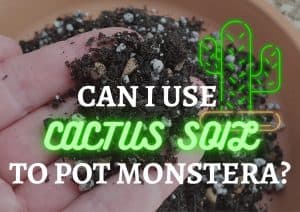What Is LECA For Plants? (Soil Upgrade?)
-
Chris Dosser
- July 20, 2022
If you buy something using the retail links in our articles, sometimes we earn a small affiliate commission. This does not impact the products we recommend.
LECA, an acronym for lightweight expanded clay aggregate, is a substrate made by roasting clay at an extremely high temperature (around 1150°C) in a rotary kiln to create individual porous clay balls that have expanded to a size of between 8mm – 20mm (0.3” – 0.8”).
Many of LECA’s properties, such as being low density, high in strength, resistant to fire and great at thermal insulation make it an ideal aggregate for use in housing construction as well as large infrastructure projects.
However its the water wicking capabilities of the clay, and the root friendly spaces created between the ball shapes that make LECA really useful as a substrate within which to grow indoor plants.
Commonly used in hydroponics, the spaces between LECA allow plant roots to breathe and grow, whilst the tumbled balls means there are no sharp edges that could potentially damage vulnerable new roots.
Note: LECA is also used as a brand name, so you may find the same product called by various descriptions. The brand Hydroton for example calls their version expanded clay pebbles.
Other benefits that LECA has over regular houseplant compost include:
- it is cleaner and easier to handle than soil
- doesn’t break down over time and as it can be reused is sustainable
- aesthetically speaking the clay balls create an interesting textural element
This article addresses what LECA means in the world of plant growing. If you want to learn the how often you should water a plant potted in LECA, check out our guide here.

Does LECA contain any nutrients that houseplants can use?
LECA is inert so does not contain any nutrients. Whilst this is one of the downsides of using clay pebbles instead of potting soil there are easy work arounds.
For a plant to develop fully you’ll simply have to remember to occasionally provide nutrients in a liquid form.
This is a task which is of second nature to those familiar with hydroponics, but will have to become a learned habit for growers new to LECA.
Despite containing no nutrients, if you intend to have your LECA medium on show in a glass vase, just be aware that exposure to sunlight will create an environment where algae can grow. To prevent this from happening, use an opaque pot or vase.
Our Favorite Houseplant Soil Mixes And Substrate
Can you reuse clay pebbles?
Re-using or recycling LECA that has previously been used as a growing medium is extremely easy but does involve a cleaning and sterilising stage.
Roots, moss, bark will need to be physically sifted out before residual algae and mould is eliminated by washing the LECA in a weak sodium hydrochloride (bleach) solution.
After resting the clay pebbles in the bleach solution for 2+ hours, rinse through multiple times with clean water. If you want to be extra cautious and make sure all bacteria and algae has been elminated, follow the bleach solution up with a bath of boiling water.
It’s this reusability of LECA that means in the long run its far more sustainable and better value for money than potting compost.
Also rinse the clay pebbles in water before first using to remove any dust created by the clay pebbles that have rubbed together during transportation.

Can you mix LECA with soil?
LECA can be used as a soilless medium, meaning it doesn’t need to be mixed with soil.
It can however be added to a soil mix to reduce compaction and improve aeration, or be added as a layer to the base of a plant pot that will then be topped with pure potting soil. In the latter scenario the LECA acts as a soakaway.
Just be mindful that the perfect ratio of soil to LECA will vary depending on the preference of the plant and your growing environment.
If you know you’re prone to forget about watering plants for weeks at a time then perhaps go easy on the LECA. Soil will hold relatively more water and provide a source of nutrients.
If on the other hand you find too much love (ahem…over watering) causes you to lose more plants that you are comfortable with then LECA might just prove the perfect solution.
Where can you buy LECA?
Like most specialist garden items it’s easy to pick up bags of LECA on Amazon. The benefit of this is that rather than having to buy and store large 45 litre bags as you would at a garden centre, much smaller volumes are available.
IKEA also sell a LECA type product named ODLA, which is available in 5l bags.

Chris Dosser
Co-Founder of Eden Indoors
Chris is a self-taught horticulturist with over a decade of experience caring for houseplants and creating lush, thriving indoor oases. He specializes in Monstera, and by self admission has a serious problem with buying and propagating rare indoor plants!
Similar Posts
4 Key Benefits Of Growing House Plants In Semi-Hydro Soil
Semi-hydro soil brings a lot of positives when used as a growing medium for houseplants. Here's some of the main reasons you should consider trying it out.
Can I Use Cactus Soil To Pot My Monstera?
Does Cacti soil have the same properties as Monstera soil? And can you use the same potting mixture across both plant families? The answer is here..




Pingback: How Often Do You Water A Plant That Is Potted In Leca? (Quick LECA Watering Guide) | Eden Indoors